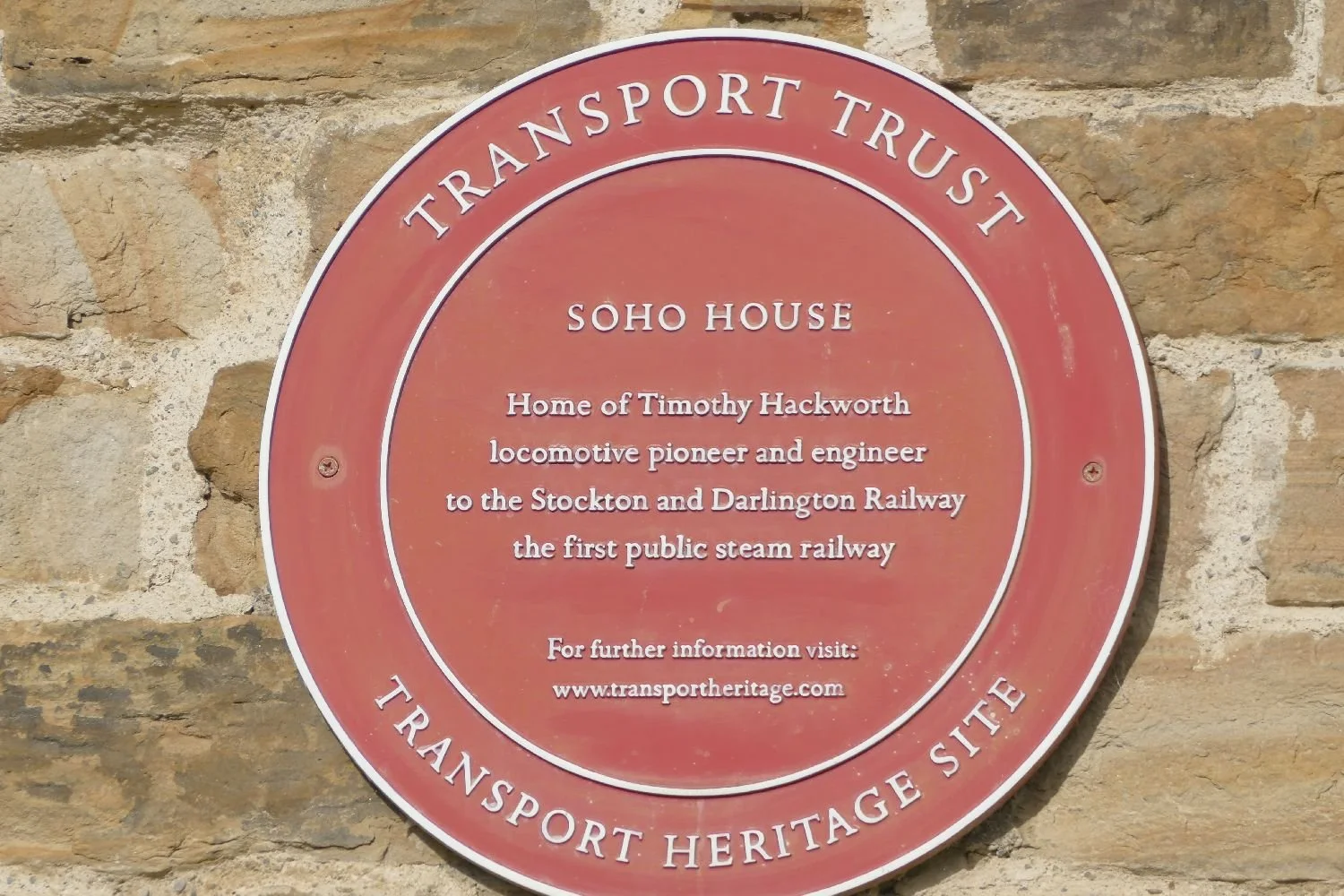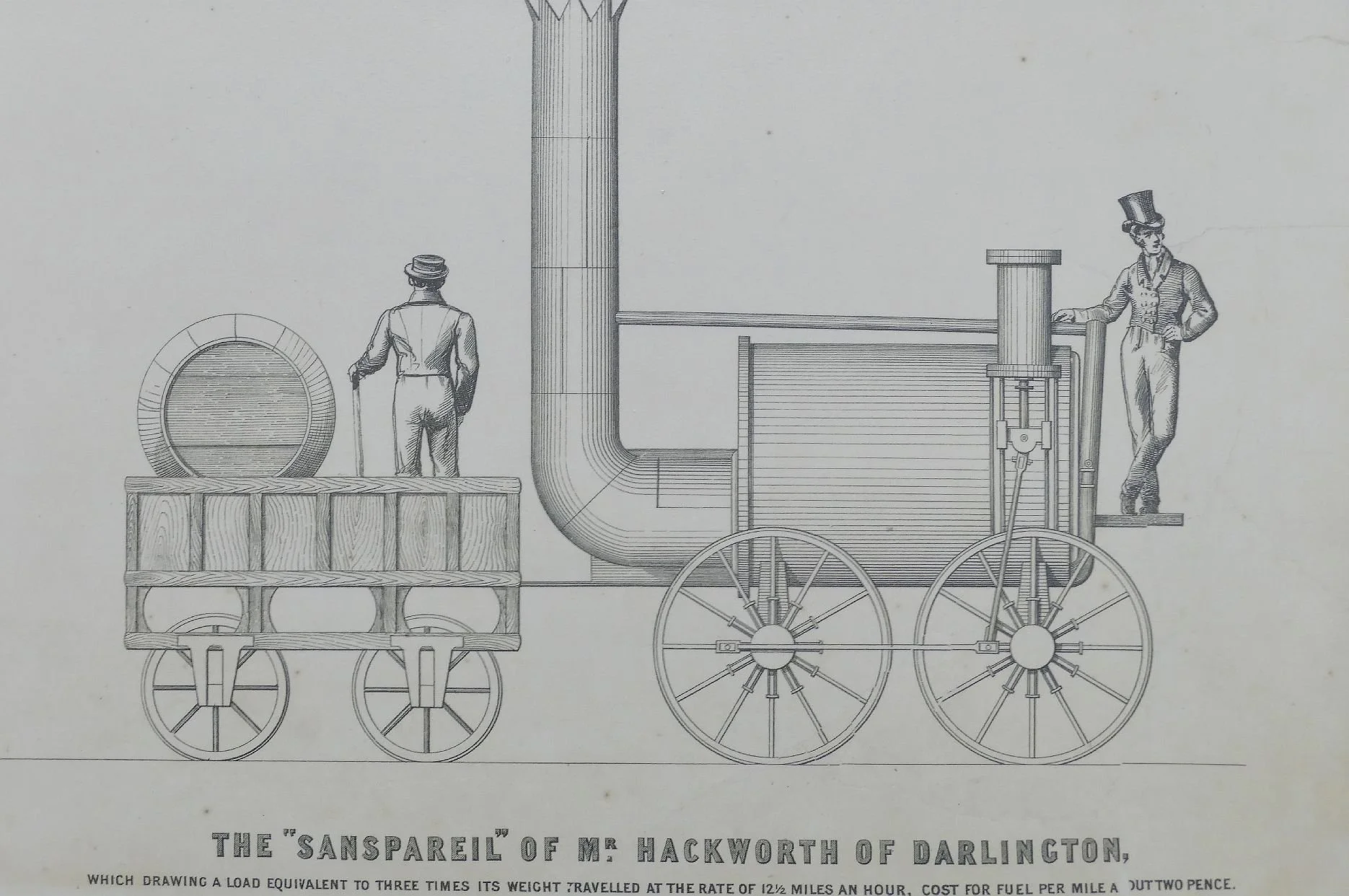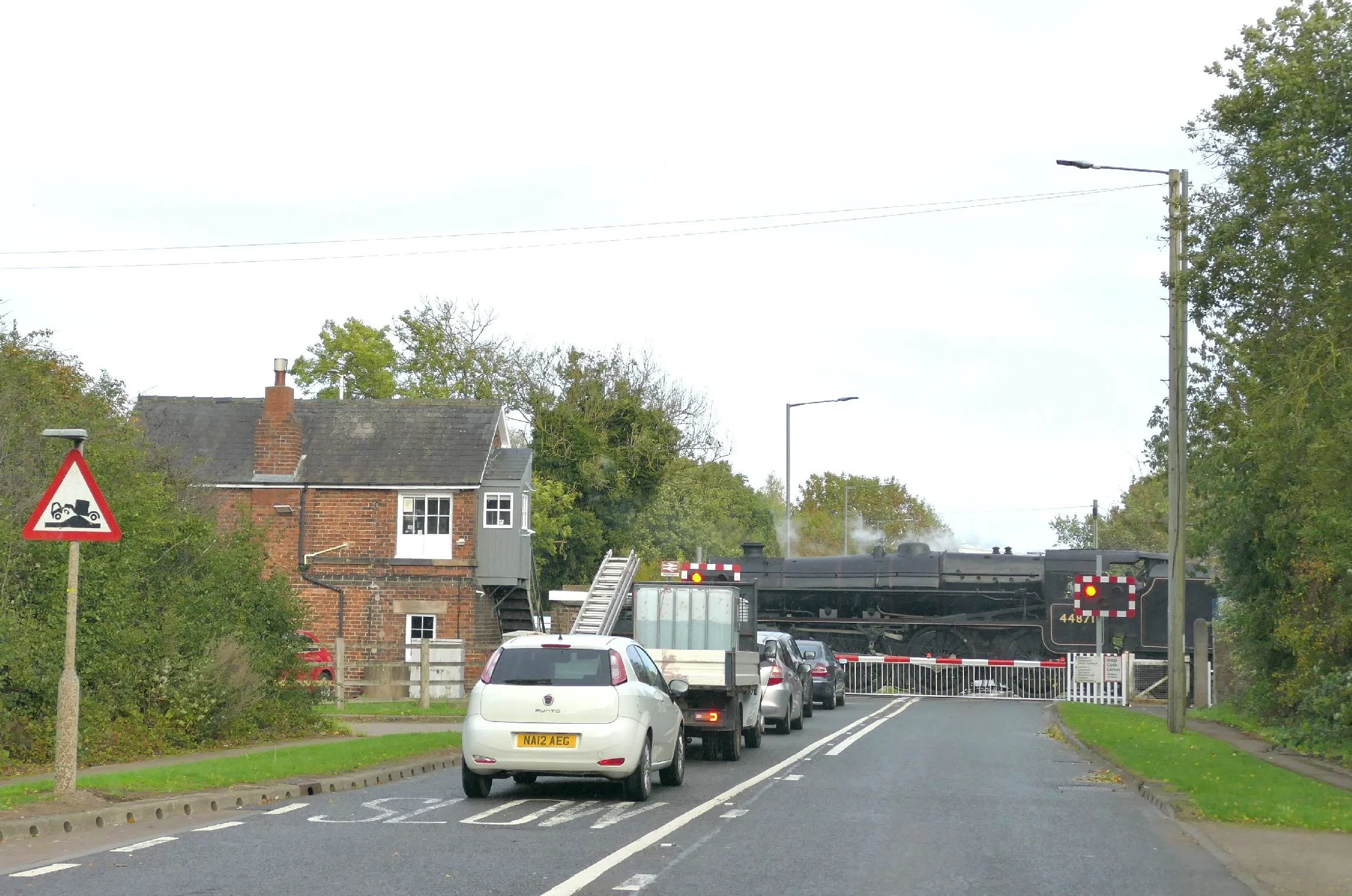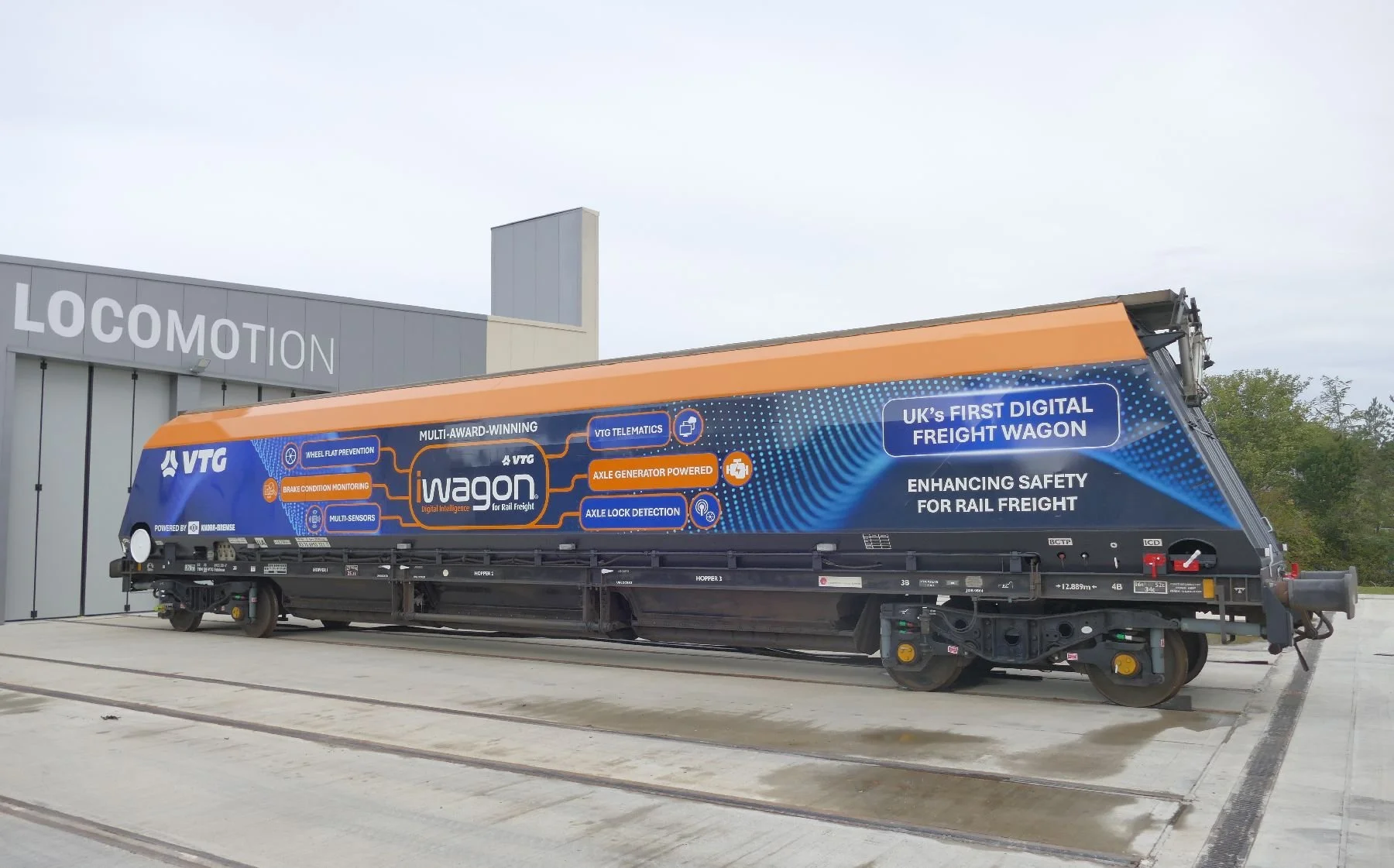Grumpy Gricer
Glenfinnan Railway Viaduct © Ken Morris
Many of Britain’s classic landscapes are influenced – in a good way - by what we now call ‘transport infrastructure’. The Glenfinnan Railway Viaduct, striding across its Highland glen with breathtaking, late Victorian assurance, was admired and photographed long before J K Rowling and film industry location scouts made it world famous.
But we can also say that much of British transportation is enhanced by beautiful landscapes. The M6 south of Tebay passes though Cumbria via the magnificent Lune Gorge. For the passenger at least, the view of fells, plumped up like enormous green velvet cushions threaded by tumbling gills, is magnificent. But for the walker, or driver on the A685, the valley will never look or sound the same again.
By Don Burgess, CC BY-SA 2.0, https://commons.wikimedia.org/w/index.php?curid=13145536
What has brought on this stumbling discourse on the relationship between transport and landscape?
The answer is ‘Railway 200’, described as “… the 200th anniversary of the birth of the modern railway. Britain and the world changed forever. Railway 200 celebrates the past, present and future of rail.” (https://railway200.co.uk/about-railway-200/).
The website continues with a lot of public relations style prose stressing how wonderful the railways were and are and will be.
Terroir spent a few days in County Durham, visiting the land of the Stockton and Darlington Railway. It was fascinating, fun, nostalgic, frustrating, informative, misleading, advertorial and well worth the visit. There was even a rail replacement stage coach (image right - can you spot it?). But the experience also raised a lot of questions and unexpected answers, if you were willing to look beneath the hype.
For Terroir, the core message was ‘Myth and Money’.
The Big Myth – the Stockton and Darlington Railway was the first railway.
The Railway 200 website says: “The Stockton & Darlington Railway opened on September 27, 1825, connecting places, people, communities and ideas and ultimately transforming the world.”
But surely, there have been transport routes which employed wheeled vehicles guided by two parallel rails (ie a ‘railway’) in use in many countries long before the September 1825? The Greeks were certainly onto something when they used ‘rutways’ to guide flatbed trucks to carry ships and cargo across the Corinth Isthmus around 600 BCE. The wheel was guided in a rut, instead of on a rail, but the basic principle is enough for some to call it the first railway.
Fast forward a few thousand years to find that ‘inclined railways’ (with rails not ruts) existed in mines from the early 17th century, using horses and/or gravity to provide the motive power. Above ground horse drawn ‘tramways’ were used in England frm the early 18th century, usually to shift materials from source (eg quarries) to boats.
‘The Railway 200’ people are careful to note that 27th September is the birthday of the ‘modern railway’. If ‘modern’ means the first use of steam engines, then we find that steam locomotives were hauling trains before 1825.
According to (https://en.wikipedia.org/wiki/Steam_locomotive) it was Richard Trevithick who should be credited with creating the earliest steam locomotive. This summer’s celebrations did make a passing reference to Trevithick but it was George Stephenson (right) who took all the engineering honours.
Image right: Bronze statue of Robert Stephenson by Carlo Marochetti, originally erected at Euston station in 1871
Another side-lined engineer was Timothy Hackworth, five years younger than Stephenson but born in the same Northumbrian colliery village. TH built a number of steam locomotives, his earliest being the Sans Pareil. Granted it blew up at one point but then so did Stephenson’s Locomotion No 1.
Hands up all those Terroir readers who have actually heard of the adventures of Master Hackworth (1786 – 1850)? Be quiet Terroir North. We know that you know!
So forget first steam engines as defining a modern railway. Is the modern railway about hauling coal trucks from collieries or carrying paying passengers? Nope - Trevithick also managed both those before 1825.
So what was so special about September 27th 1825? It was actually the birthday of the Stockton and Darlington Railway company, not of steam hauled trains, not of passenger on trains, but the day the first railway company went into commercial operation. That day was celebrated in style with crowds of onlookers. The SDR put on a special train with wagons carrying coal and wagons carrying people and a wagon carrying a brass band. It was hauled by ‘Locomotion’ and travelled 18 miles from Shildon to Stockton. It seems to have been a splendid and exciting pageant; possibly the first modern use of a good promotional team, as well?
Locomotion hauling coal, passengers and a brass band across the Skerne Bridge
So, Terroir wonders, was the 27th September 1825 celebrating railways as such, or just a new transport business model? Was the engineering prowess, the industrial revolution’s hunger for coal, the need for an Act of Parliament andextensive use of Compulsory Purchase Orders just part of the back story? We are sure the answer is no. That epic journey must have been a celebration of engineering prowess, as well as a recognition of the business opportunities offered by coal, the industrial revolution and the empire. Who can blame the shareholders for making it into a ‘right good do’.
A one hundreth anniversary celebration of railways was also held in England in 1925. Perhaps we shouldn’t blame the big four railway companies for using the Stockton and Darlington as an excuse for a celebration. The London and North Eastern Railway must have been particularly keen on the location although a date in July was deemed more appropriate than September. It must have seemed the perfect opportunity for a post war knees up, and celebration for the whole of Britain and its Empire.
It all happened again in August 1975, although ironically, this event was more of a celebratory farewell to steam than the welcome shindig of 150 years ago.
So it’s no surprise that August and September 2025 was in the diary for another railway extravaganza. The Rail 200 website again: “During 2025 Network Rail, alongside many other rail industry partners, will be celebrating rail’s remarkable past, recognise its importance today, and look forward to its future.” (https://www.networkrail.co.uk/who-we-are/our-history/railway-200/).
So why did Terroir return home with a few grumpy nit-picks lurking in the back of the mind? Your honour, I submit the following evidence. The first observation is ridiculously simple: the number of those who were asking ‘why this date’ or saying ‘it’s the wrong date’. How come so many people thought of it as a 200th anniversary of railways in general? We got the message that “Railway 200 will showcase how the railway shaped and continues to shape national life” but not that it was the third in a series of railway celebrations based on the opening of the Stockton and Darlington Railway. Where was any information which illustrated the 1925 and ’75 celebrations? But does it really matter? Yes, to some people it did.
The second nit-pick is much more serious. Where was the replica engine of Locomotion No.1? It was billed to appear on the day we were visiting. No sign of it, not even an announcement that the scheduled service had been cancelled.
The third nit-pick was distinctly worrying. The razzamatazz and display of shiny locomotives prepared us for exhibits which would talk up the UK railway industry, something which the majority of visitors probably ignored.
On wandering into a display on the future of railways, however (apparently presented by the Rail 200 partners), my propaganda klaxon started bleating. Now no-one in Terroir has a PhD in mechanical engineering or computer science but we are interested in sustainability, climate change and new technology. We can also read and, occasionally, we are quite good at reading between the lines or spotting very selective use of information and data. The display was very selective indeed.
Appalled, I expressed my indignation out loud. A young engineer standing nearby looked over and substantiated my views. As we left, the trio on duty at the entrance to the display were – politely - informed of my/our opinions! They took it well but I doubt the feedback went much further.
Next time we will be looking at the fun stuff – yes really - and how important geology is in the design of wagons.
And if you are out there, Mr Young Engineer, it was great to meet you and I do hope you raised those dodgy information boards with your colleagues.

















